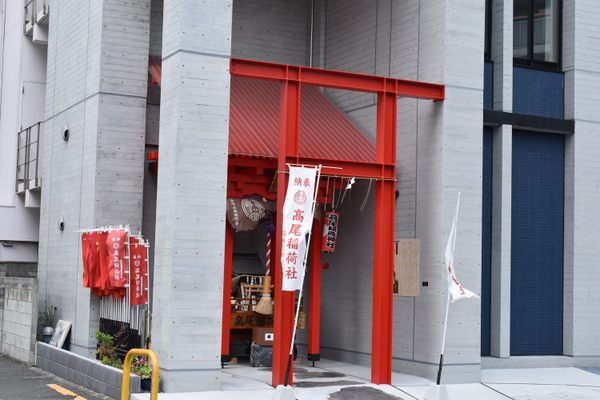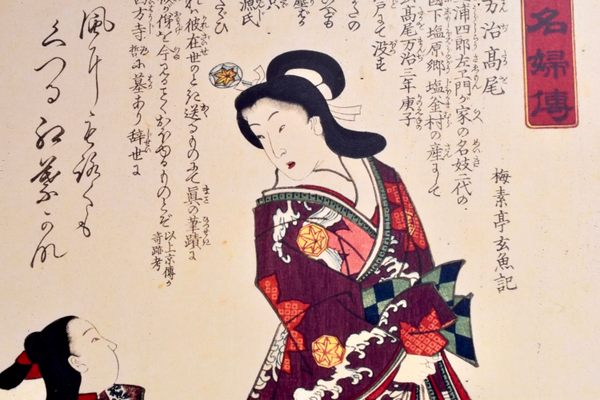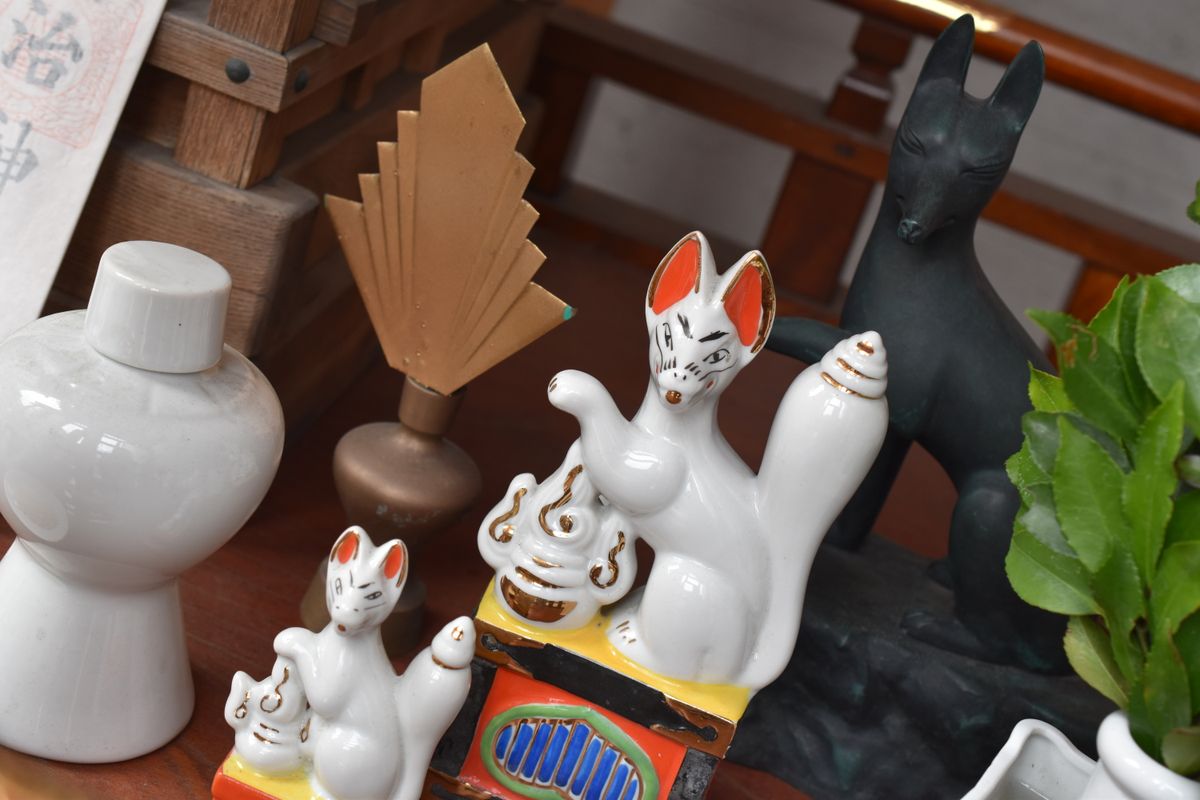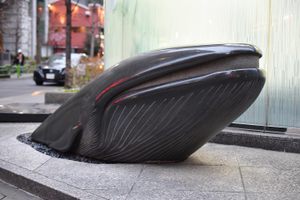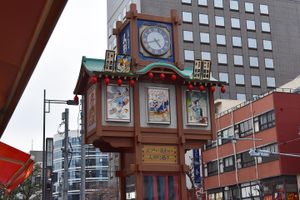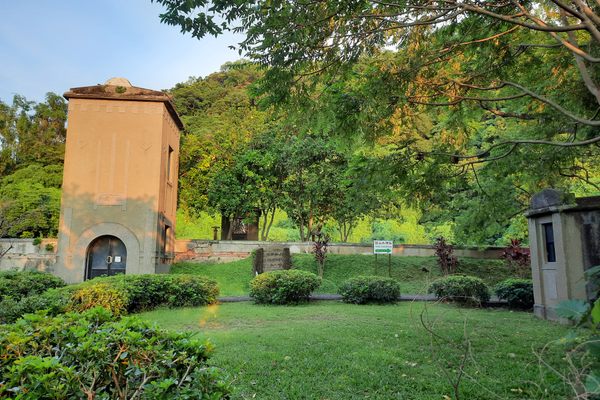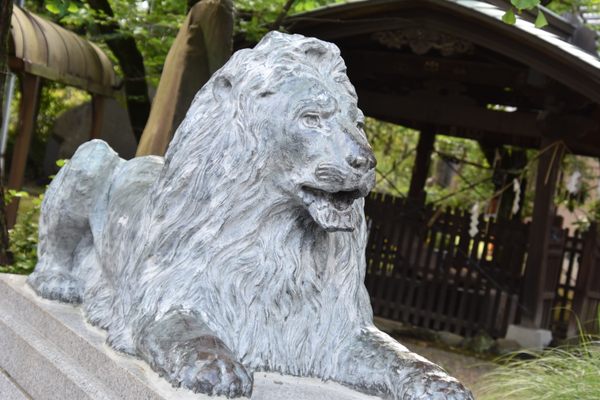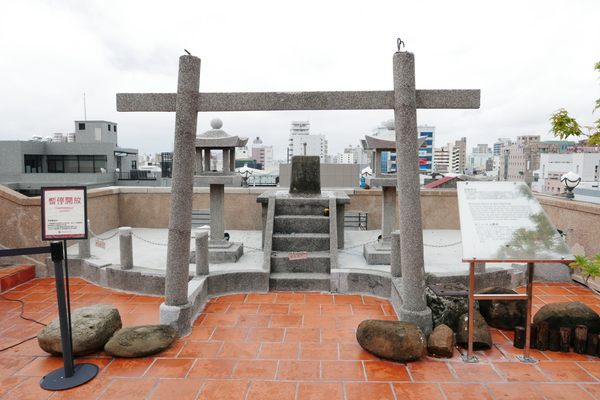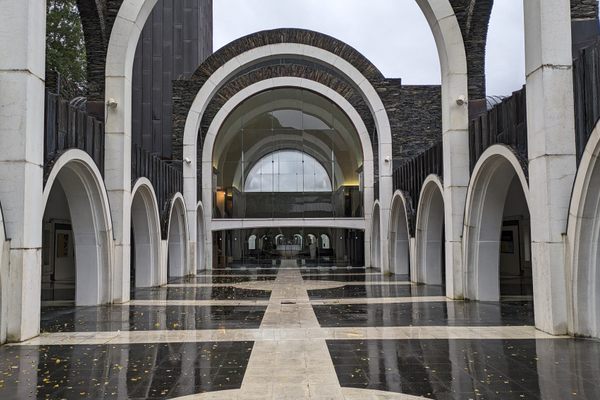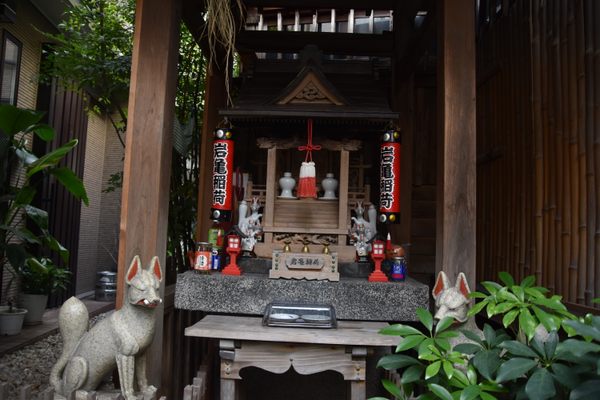About
Small Shinto shrines aren’t a rare sight in the streets of Japan, typically consisting of a torii arch, an offertory box, and nothing much more. At first glance, Takao Inari Shrine in the Nihonbashi-Hakozakicho district of Tokyo seems like one of such shrines, with no attending priests, no amulets nor fortune slips to be seen, which are otherwise common in places of Shinto worship.
Nearly blending into the wall of an office building, the inconspicuous shrine recently underwent refurbishment work and boasts an ultra-modern, almost LEGO-like torii arch made out of a steel frame, as well as a painting of colorful clouds on the ceiling. The small sanctuary in the center is guarded by statuettes of kitsune, foxes serving the god of prosperity, Inari.
Takao Inari Shrine is dedicated to a syncretized entity, the spirit of a mid-17th-century yūjo or courtesan called Takao-Dayū identified with the deity of Inari. While deifications of historical figures aren't unheard-of in Japanese culture, what makes this case unique is that the shrine's main worship is a first-class relic of Takao-Dayū: her skull.
Born circa 1641 and orphaned as a child, the girl (who was named Aki or Miyo, according to some sources) was making her living in the hot springs village of Shiobara by selling fossil leaves to tourists when the madame of Miura-ya, the top-class bordello of the Yoshiwara Pleasure District, took a shine on her. The madame even adopted the girl and took her away to Tokyo, intending to train her to be her successor.
But things didn't go as she had planned. A great fire broke out in Tokyo destroying more than half of the city and killing over 100,000 people, delivering a major blow to the business in Yoshiwara. Eventually, the girl decided to work as a courtesan herself to save the bordello and climbed through the ranks at an incredible speed, becoming the second Takao-Dayū in history, a title reserved for the city's top geisha-courtesan.
Her fame was short-lived, however, as she died of tuberculosis one year later at the age of 19. While she was buried at Saiho-ji Temple in today's Nishi-Sugamo, local rumors spawned a folk legend in which she is murdered by a samurai lord after rejecting him. Reportedly, the severed head of the murdered girl was discovered on New Year's Day in 1708, after which the locals erected a shrine on the site and dedicated it to the deified skull.
It is highly unlikely that the skull belonged to Takao-Dayū, but that did not stop the townsfolk from worshipping it. Over time, it became a sort of god that is said to possess divine powers to heal headaches as well as other head-related pains and diseases. While it is not on public display, it may be shown to the shrine-goers in a ceremony held every forty years.
Related Tags
Hidden Japan: Sado Island, Nara & Kyoto
Explore a different side of Japan.
Book NowPublished
June 9, 2023
